Features of combined windows. Classification of types and materials, dignity and disadvantages, manufacturers, prices.


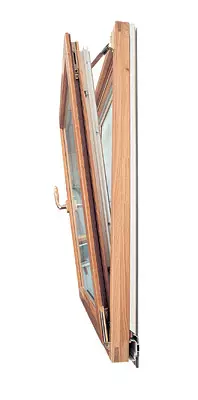

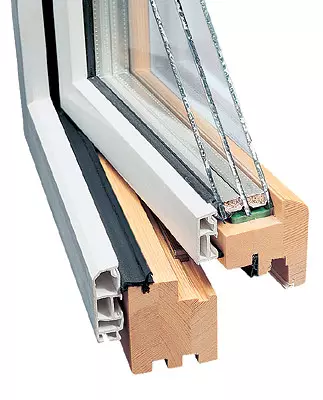
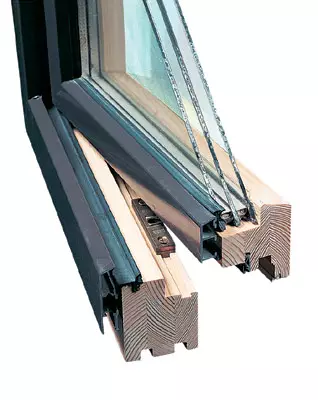
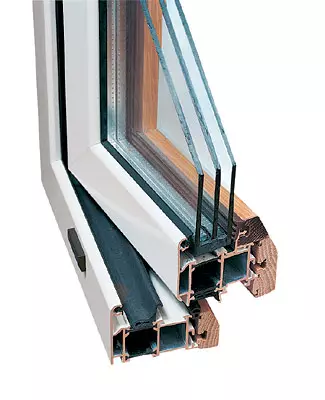
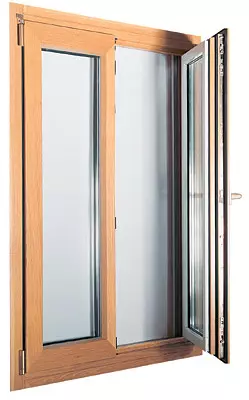
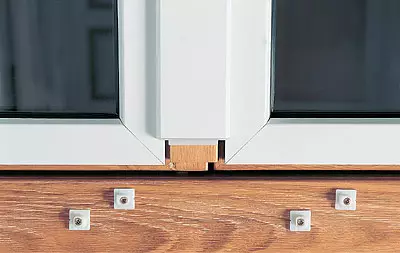
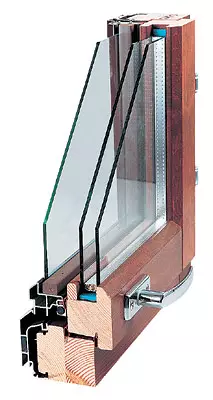
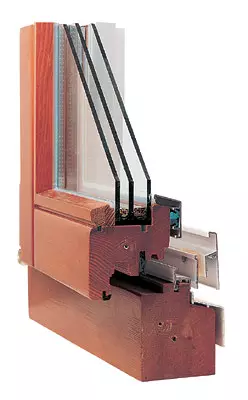
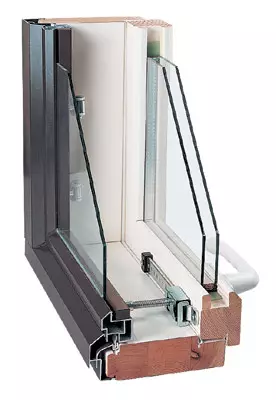
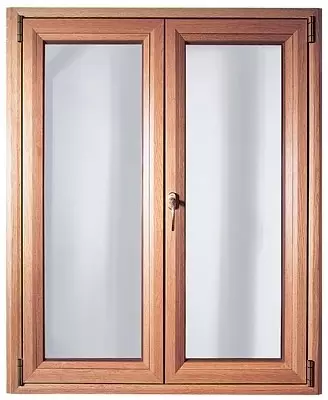
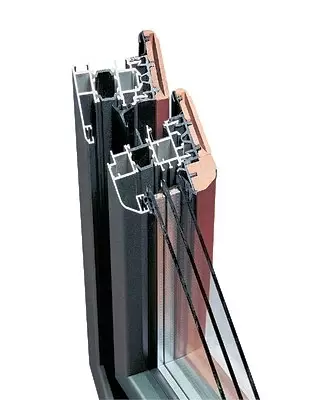
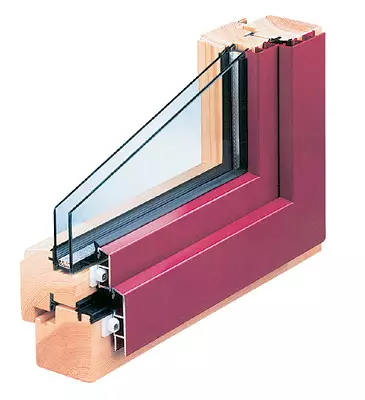
Modern windows are, first of all, windows made from modern materials. It is aware, comfortable, reliable, and even beautiful. To task, to create an indoor microclimate in the room: to provide optimal temperature, air and moisture exchange, pass the required amount of light, protect the inner space from noise. Is it any wonder that the choice of windows is given so much attention?
Seven years ago, a plastic-window boom began in Moscow: the old wooden frames ruthlessly replaced with durable white plastic. Well, windows from PVC, if they are performed qualitatively, have a number of advantages. Another popular material for glass-paste profiles is aluminum. It is durable and easy, new technologies increased its sound and heat-insulating characteristics, and modern surface treatment methods transformed appearance. Today the fashion was returned to all natural, and the window frames made of wood - the most environmentally friendly and relatively expensive material, again became popular and prestigious. Modern methods of processing, painting of wood, new technology production technologies made it more durable, weather-resistant, improved aesthetic qualities. The most common windows of wood and oak breed in the manufacture of windows, and not an array, but glued bar (however, sometimes it is called an engineering array). The brace of window profiles are used mainly.
Materials used for binding have their advantages and disadvantages. The desire to maximally use the pros and minimize the disadvantages of each of them led to the creation of so-called combined windows. They are divided into wooden-aluminum, aluminum-wooden and wooden plastic. When they are reviewed for price comparison, a window of 1.51.5 m (area-2,25m2) was taken to the sash and a two-chamber double-glazed glass with a thickness of 32-36mm.
- Wood-aluminum. This time is the most common type of combined windows. Wooden material with low heat and sound conductivity, environmentally friendly, fit in any interior. But even the highest quality frame is desirable to protect against external influences. To protect the wooden frame used aluminum. It is a lightweight, durable and non-correcting material with high resistance to environmental impacts and during the entire operation period practically does not require repair. Durability of aluminum structures - more than 80 years (minimum settlement service life). This metal is better than any other material, retains its structural properties when temperatures drops. After processing the surface of aluminum products, they become resistant to corrosion caused by rain, snow, heat and was able.
Leaders in the production of such windows - Germany and Scandinavian countries. Good Russian windows are manufactured in German, Finnish, Swedish technologies involving different variants of the combination of these two materials.
- Finnish type. Two separate sash are used in the stonna block. In this case, the outer is made of aluminum, and the internal of wood. The flaps are connected to the roller, so that can be opened or simultaneously or alternately. The mechanism connecting the flaps is quite simple. It is a metal rod, one end of which is rigidly fixed on the outer flap, and the second is moving along a metal comb located on the inner frame. The rod is equipped with retainers, allowing to fasten the sash in the desired position so that it does not knock on the wind. Single glass is inserted into the outer frame, which can be tinted, and sunscreen, and mirror, and shockproof. The inner frame is mounted double-glazed. The thickness of the window box can range from 95 to 210mm. The larger the distance between the sash, the higher the high performance on the heat and sound insulation has a window.
The disadvantages of windows with separate bindings include only quite high weight and the possibility of opening the sash only in the same plane. Ak advantages - the ability to build sunscreen blinds between Ramami, very high indicators for thermal insulation.
In our market, such windows are represented by Finnish firms Tiivi, Domus, Fenestra. Externally, all products look very adequate, some special differences are difficult to notice between them. But each manufacturer empowers its windows with certain technological features. For example, the DOMUS product uses the VAC protective technology. Weight case The wooden details of the windows are impregnated in a vacuum with a composition that does not change the natural color of wood, which makes it possible to scour the surface in the future. Fenestra owns technology that prevents the appearance on the surface of the box of dark spots (usually these stains occur due to the resin contained in the wood). Such an effect is achieved by applying a special protective layer on the inside of the box. TIIVI offers windows with paired sash, between which you can mount the blinds, as well as another version of the window binding: the outer aluminum flap with glass + two internal wooden sash with single glasses, interconnected.
The two-frame PRIMUS from Fenestra from pine is worth $ 520-530, Domus- $ 560-580, Tiivi- $ 760-1000. The oak window is twice as much as the oak requires more thorough drying and processing. An option is also possible when the binding of the seas is made of pine, and everything else is oak ($ 800-900).
Currently, you can meet windows performed on Finnish technology by Russian manufacturers. These products are worth 10-15% cheaper than imported. However, we do not make vacuum impregnation of wood. It is carried out only Finns.
- Swedish type. This window consists of two frames with twisted binders: external (from an aluminum profile with single glass) and internal (wooden, with two-chamber double-glazed windows). Such products are represented by TIIVI. The thickness of the box is 90-105mm. Window's conventions include the possibility of opening in two planes and is not a very narrow window box, however, nevertheless, mount interframe blinds. Such a product made in Murmansk costs $ 860, and Finnish production- $ 1200.
- German type. The wooden frame is protected by an aluminum overlay, which is placed throughout the perimeter of the window. But the frame itself remains single. There are several ways to fasten the aluminum lining: it can be recorded by special clips or close to the wooden frame. Experts say that the fastening clips are left between the frame and the aluminum lining some gap, providing ventilation of the room and the moisture outflow. Now, the aluminum lining, if necessary, it is easy to remove and then put in place again. This suggests that such windows will serve 50 years longer. Another plus design with clippers is the ability to open the sash in two planes. A window with swivel-folding flaps, made in German technology using materials from Germany, costs $ 750-780 (pine) and $ 1450-1500 (oak). Fenestra produces one-frame Fenix windows. The cost of the product from pine- $ 570-590. Russian windows, performed in German technology, will cost you $ 500-590 (pine), $ 550-560 (larch), $ 900-1475 (oak).
Wood parts of this type of windows of this type, if desired, are toned with a special core composition and water-based varnish. Instead, you can paint products in a variety of colors (it is cheaper by 10-15%). Aluminum profile is also easily painted in any color.
- Finnish type. Two separate sash are used in the stonna block. In this case, the outer is made of aluminum, and the internal of wood. The flaps are connected to the roller, so that can be opened or simultaneously or alternately. The mechanism connecting the flaps is quite simple. It is a metal rod, one end of which is rigidly fixed on the outer flap, and the second is moving along a metal comb located on the inner frame. The rod is equipped with retainers, allowing to fasten the sash in the desired position so that it does not knock on the wind. Single glass is inserted into the outer frame, which can be tinted, and sunscreen, and mirror, and shockproof. The inner frame is mounted double-glazed. The thickness of the window box can range from 95 to 210mm. The larger the distance between the sash, the higher the high performance on the heat and sound insulation has a window.
- Aluminum tree. This window has a frame from an aluminum profile, trimmed from the inside by a tree. Aluminum frame is durable, durable, well protected from any atmospheric influences. The Aiz of the room window looks cozy and warm due to wooden linings performing a decorative function.
In Russia, with its cold climate, long-lasting winter and low temperatures, the "warm" profiles are most common in the manufacture of aluminum windows. The outer and inner shell of these prefabricated profiles are connected by the thermal designer, or thermostat-insulating plackets of fiberglass reinforced polyamide. Thermomost interrupts the heat flow, thus improving the heat insulating properties of the structure. The width of the thermal insulation insert oscillates from different manufacturers from 16 to 34mm, but should not be less than 24mm without taking into account the part of the polyamide, which is embedded in the aluminum profile (according to the operation of all sorts of "warm" systems in Russia). Also, the thermal is installed between the aluminum frame and the wooden lining, as they differ in the degree of thermal expansion.
Two main technologies for painting aluminum profile are known:
- Anodizing is metal oxidized so that a protective oxide film is formed. The coating is solid, resistant to atmospheric effects. One of its disadvantages is rather limited color gamut;
- Applying paintwork coating by powder spraying. The wedge gamut of such a coating includes all colors according to the RAL catalog.
The advantages of such windows should include their fire safety. In addition, aluminum is much slower than plastic, allows you to create windows of any shapes and sizes, types of opening and membership of light opening. In other words, with the help of this material, even the most bold fantasies of designers are implemented. Another advantage of the aluminum frame is easy to care: no detergent will be spoiled.
The quality of the combined windows is determined by such "trifles" as the stabilizing impregnation of the wooden parts of the frame; lubrication hole provided in window loops; Natural rubber compactor; Protective film preventing wooden surfaces in the process of transportation and installation of products.
There are combined windows designed for different climatic conditions. There is even a model for the extreme north, having several thermal dresses with additional emptiness inside.
There is a window made by Italian technology using the Italian profile and wood, from $ 1,350 (oak bedding) to $ 1500 (bedding from exotic wood varieties). The model designed for harsh climatic conditions and equipped with two thermomosts costs from $ 1500. The window, made on Italian technology, but from Russian materials will cost 20% cheaper. Wooden lining can be the most different. It is important only to pay attention to that the wooden pad is not glued and not screwed to the wooden frame.
- Wood-plastic. In this case, a wooden frame with an outside of the window is protected by plastic. There is such a system so far that is not much disseminated. Plastic plays the same role as aluminum in wooden and aluminum structures. Hollow PVC profiles and a well-thought-out system of moisture conductivity securely protect the window from atmospheric influences and do not require care. The PVC profile is attached to the tree with the help of special holders removing the voltage arising from the various coefficients of wood expansion and PVC. There is a window from a pine bar of $ 570, from oak- $ 1085, from the red tree of Meranti- $ 670.
For modern windows, a number of additional accessories have been developed, each of which performs its specific functions:
- Mosquito nets protect the room from penetrating insects and spider-shaped;
- Blinds protect the space of the house from the Sun and prying eyes; mounted both indoors and inside the window design;
- Cutting aluminum shutters (rolling shutters) - saved from wind, noise and other household and atmospheric stimuli; provide additional thermal insulation and increased wind protection against hacking;
- Fresh air valve for ventilation (filter or without it).
Unfortunately, the use of windows with two-three contours of the seal almost completely stops the inflow of fresh air to the room. The most successful solution to this problem is the use of special window ventilation valves. The task of such devices is to provide access to the house of fresh air without deteriorating the noise properties of the window. The valve can be located directly on the window or nearby in the wall. Installation in the wall is very laborious and quite expensive. When installed on the window there are two options for action: the valve is either ordered with the window, or is mounted directly through a fairly wide binding of the window without dismantling and replacing the glass package.
There are models both with air flow control and without control. Since there are different situations, it is very convenient to be able to adjust the air flow. It is provided for manual or automatic regulation. With manual, the question always arises when, in which room and how to open the valve. Now there are ventilation systems that allow you to control the influx of outdoor air depending on the level of relative humidity in each of the premises. Such a system consists of supply and exhaust devices with humidity adjustment. Supply devices are installed in the main rooms on hermetic window frames. An outdoor air is imparted (when it is necessary, where it is necessary and how much it is necessary), which goes to the utility room (kitchen, bathroom, toilet), where there are usually central ventilation channels. Exhaust devices take polluted air from the rooms in which installed, as well as received from the main rooms. Adjusting the supply and release of air is carried out automatically and without the use of electricity - with a decrease in the level of humidity indoors, the bandwidth is automatically reduced, and when this level increases, the cross section increases.
All sorts of electronic devices can also be attributed to additional accessories:
- providing automatic regulation of ventilation;
- providing remote opening of Framug and blinds;
- Electromagnetic and electro-optical safety devices that send alarm when unauthorized window opening.
